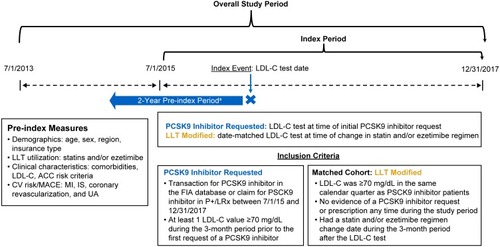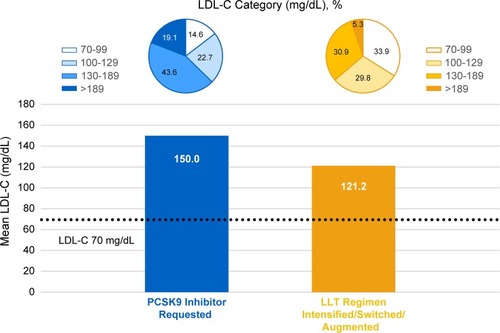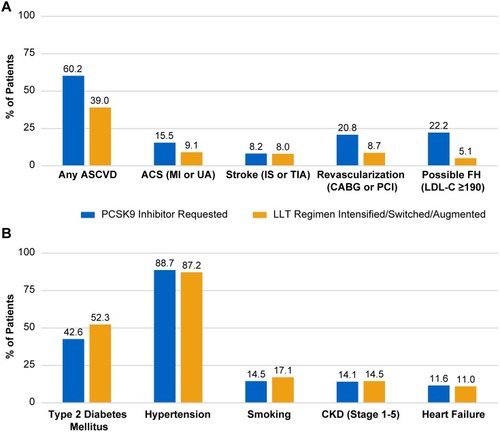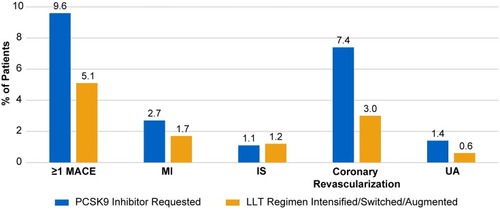Figures & data
Figure 1 Study design and patient population: study period from 7/1/2013 to 12/31/2017.
Abbreviations: ACC, American College of Cardiology; ASCVD, atherosclerotic CV disease; CV, cardiovascular; FIA, Formulary Impact Analyzer; IS, ischemic stroke; LDL-C, low-density lipoprotein cholesterol; LLT, lipid-lowering therapy; MACE, major adverse CV events; MI, myocardial infarction; P+, PharMetrics Plus; PCSK9, proprotein convertase subtilisin/kexin type 9; UA, unstable angina.

Table 1 Baseline Demographic And Clinical Characteristics: Matched Cohorts
Figure 2 Mean baseline LDL-C value at index.
Abbreviations: LDL-C, low-density lipoprotein cholesterol; LLT, lipid-lowering therapy; PCSK9, proprotein convertase subtilisin/kexin type 9.

Figure 3 ASCVD diagnoses (A) and cardiovascular comorbidities and risk factors (B).
Abbreviations: ASCVD, atherosclerotic cardiovascular disease; ACS, acute coronary syndrome; CABG, coronary artery bypass graft; CKD, chronic kidney disease; FH, familial hypercholesterolemia; ICD, International Classification of Diseases; IS, ischemic stroke; MI, myocardial infarction; LDL-C, low-density lipoprotein cholesterol; LLT, lipid-lowering therapy; PCI, percutaneous coronary intervention; PCSK9, proprotein convertase subtilisin/kexin type 9; TIA, transient ischemic attack; UA, unstable angina.

Figure 4 Cardiovascular risk: ≥1 MACE during the 2-year baseline period.
Abbreviations: IS, ischemic stroke; LLT, lipid-lowering therapy; MACE, major adverse cardiovascular events; MI, myocardial infarction; P+, PharMetrics Plus; PCSK9, proprotein convertase subtilisin/kexin type 9; UA, unstable angina.

